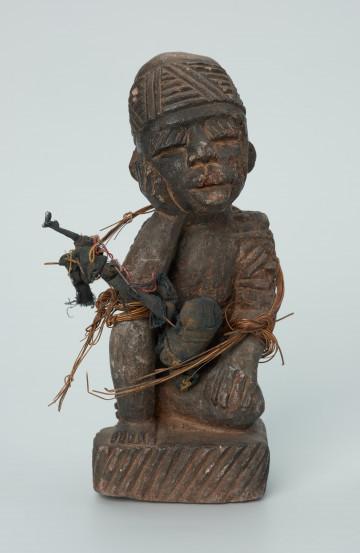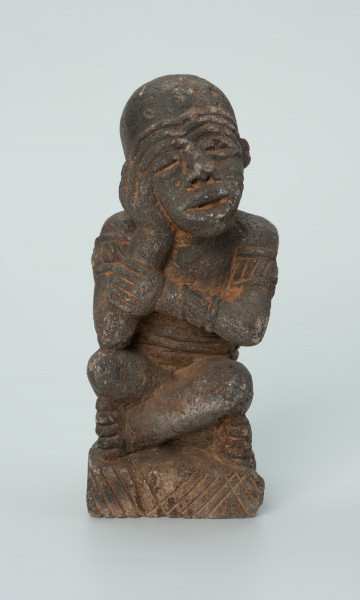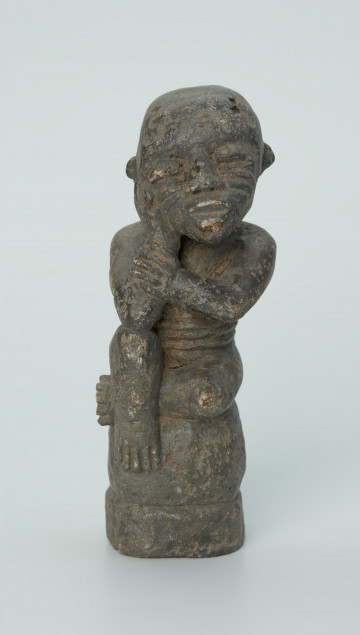
Ancestor worship figure
około 1901 — 2000
National Museum in Szczecin
Part of the collection: Mintadi figurines
The ntadi statue (plural mintadi) is associated with ancestor worship. Mintadi were placed above all on the graves of rulers and royal dignitaries. They acted as guards and protectors. They were to ensure continuity and durability of power. The sculpture in question was probably an effigy of a deceased dignitary. The high rank of the figure is reflected in his posture - contemplative facial features, proudly placed arms, torso and legs. The arms and back of the figure show scarifications called nsamba (scar tattoo) in the Kikongo language, which form a herringbone pattern. The Bakongo consider the nsamba a kind of identity card; they make it by incising the skin with the end of a knife or with a reed needle and dyes. Each village has its type of scarification, which its location can be recognised as the nsamba is made on the forehead, cheeks, shoulders, back, belly, and by the patterns. Besides, scarification is intended to serve an aesthetic purpose, which is why both men and women like to use it. The Bakongo also believe that the nsamba has healing and protective powers and is considered a guarantee of fertility.
Katarzyna Findlik-Gawron
Author / creator
Dimensions
cały obiekt: height: 22,3 cm, width: 7,9 cm
Object type
sculpture
Creation time / dating
Creation / finding place
Identification number
Location / status

około 1901 — 2000
National Museum in Szczecin

około 1901 — 2000
National Museum in Szczecin

około 1901 — 2000
National Museum in Szczecin
DISCOVER this TOPIC
National Museum in Lublin
DISCOVER this PATH
Educational path